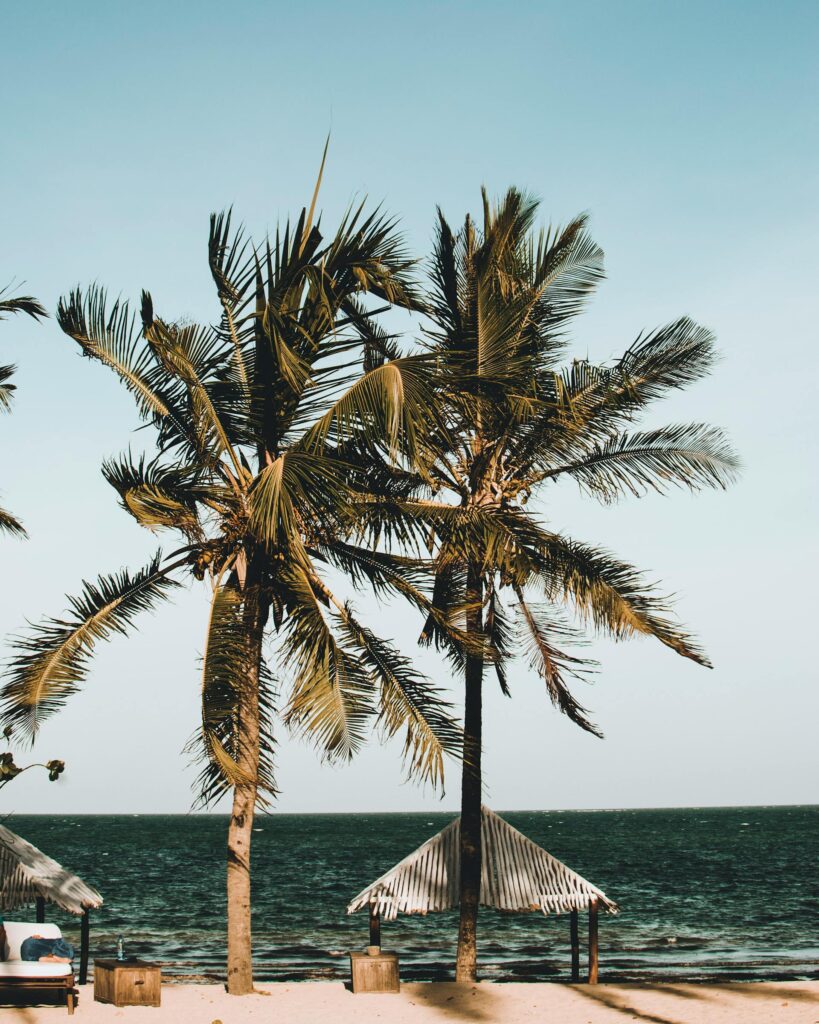Introduction to Palm Trees and Their Unique Characteristics
Florida, often termed the ‘Sunshine State,’ is home to a wide variety of palm trees, each contributing to its tropical allure. Among the many fascinating features of palm trees, one that stands out is their unique bark-shedding habit. This intriguing process plays a pivotal role in their survival and growth, creating an ecosystem that supports not only the trees themselves but also the surrounding environment.
Understanding the Bark-Shedding Process
Palm trees, unlike most other trees, do not have bark in the traditional sense. Instead, they possess a series of overlapping leaf bases that form a protective layer around the trunk. As the tree grows, these bases naturally shed, a process that can seem peculiar but is essential for the tree’s health.
The Anatomy of Palm Tree Bark
The structure of palm tree bark is unique, consisting of a fibrous exterior that provides structural integrity and protection. The shedding process occurs as new leaves emerge and older ones die off, pushing the old bases away from the trunk.
Why Do Palm Trees Shed Bark?
Shedding is a natural growth mechanism that helps the tree manage resources efficiently. By discarding old leaf bases, palm trees can direct nutrients and energy towards new growth, crucial for their survival in the competitive ecosystems of Florida.
The Environmental Impact of Bark Shedding
Palm trees play a vital role in Florida’s ecosystem, and their bark-shedding habit contributes significantly to the local environment. The fallen bark decomposes, enriching the soil with organic matter and providing habitat for various wildlife species.
Supporting Local Wildlife
The decomposed bark creates a rich medium that supports insects, fungi, and microorganisms, forming the base of a complex food web. Birds and small mammals often use the loose bark for nesting material, demonstrating how palm trees contribute to biodiversity.
Enhancing Soil Quality
As the bark decomposes, it releases essential nutrients back into the soil, enhancing its fertility. This process is particularly beneficial in Florida’s often sandy soils, which can lack the nutrients necessary for plant growth.
Palm Trees and Climate Adaptation
Florida’s climate poses unique challenges, from intense storms to prolonged droughts. Palm trees have adapted to these conditions in part through their bark-shedding habit, which plays a crucial role in their resilience.
Resilience Against Storms
The streamlined structure resulting from bark shedding allows palm trees to sway flexibly in strong winds, reducing the risk of snapping. This adaptability is essential during Florida’s hurricane season, where resilience can mean survival.
Efficient Water Management
Palm trees are adept at conserving water, a necessity in Florida’s periodic drought conditions. The shedding process helps minimize water loss by reducing the surface area exposed to the sun and wind.
Practical Applications for Plant Enthusiasts and Businesses
For those in the plant business, particularly in Florida, understanding the unique needs and behaviors of palm trees can be advantageous. Companies like For Plants can leverage this knowledge to offer tailored care products and services that enhance palm tree health and aesthetic appeal.
Offering Specialized Care
Understanding the bark-shedding process allows businesses to offer specialized maintenance services that cater to the specific needs of palm trees, such as pruning and pest management.
Educational Opportunities
Businesses can also engage the community through educational workshops, teaching locals about the importance of palm trees and their ecological roles, promoting conservation efforts.
Conclusion: Embracing the Wonders of Palm Trees
Palm trees, with their unique bark-shedding habit, are more than just symbols of tropical beauty. They are integral components of Florida’s ecosystem, exemplifying resilience and adaptability. By understanding and appreciating these natural processes, we can better support the growth and survival of these iconic trees.
Whether you’re a plant enthusiast or a business owner, embracing the unique characteristics of palm trees can lead to a more sustainable and harmonious relationship with Florida’s natural environment.



